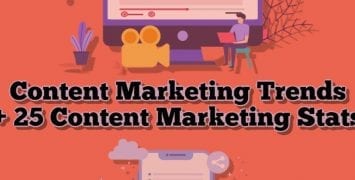Your website is up and running. Every aspect has been crafted with SEO in mind. Your pages are optimized for mobile. Your content includes well researched, effective keywords. Every aspect of your website is designed to improve your site’s position in the search results page.
But there’s a problem. Customers aren’t purchasing your products or services. The SEO has drawn them to your page, but they’re not “taking the plunge” and making a purchase.
This actually a common problem. Fortunately, the solution is actually pretty simple. You want to create a conversion funnel. Here’s everything you need to know:
What is a Conversion Funnel?
Potential customers almost never make a purchase after their first visit to a site. Instead, most people need to engage with the brand a few different times before they feel comfortable enough to buy. This path of engagement points is called a Conversion Funnel.
Not all traffic results in conversions. The number of people who visit your site will always be more than the amount of people who make a purchase. Identifying when and why some users drop out, and why others make a purchase, is the basic idea of the Conversion Funnel.
Since you’re starting out with a large group of people, but end up with a smaller group of actual customers, the entire process looks like a funnel. The idea is to make your Conversion Funnel appealing to the largest possible group of potential customers as they pass through each stage.
A conversion funnel has four elements:
- Lead Nurturing
- Behavioral Targeting
- Customer Retention
- Referral
Remember, your customers are all individuals. You’re not aiming for a “one size fits all” approach. You’re not creating a funnel to sort customers into various groups. Instead, the funnel is designed to understand the behavior of potential customers, then nurture their desires while addressing their potential concerns.
A conversion funnel is concerned with more than making just one sale. Instead, the funnel continues after checkout. Using post-sale emails and other techniques, you can turn a one-time purchase into a lifelong connection between customer and brand.
Identifying Problem Areas
At each stage of the funnel, a certain amount of people will decline further information on your product or service. Obviously, you won’t know every single person’s reason for leaving. But you can identify common trends and then take steps to fix these funnel “leaks.”
Here are the three main reasons a potential customer will leave the conversion funnel:
1. Technical issues
These include any type of technical error or disconnect. This can also include content disconnects, such as when your ad promises one thing but your landing page delivers something else.
2. Product or Service Dissatisfaction
This when the product or service you provide isn’t what the customer is looking for. Key features might be missing, or your site copy might not properly explain how the product or service is the best choice to fulfill a need.
3. Lack of Brand Trust
Customers only purchase from a company they trust. Building trust involves humanizing your business, providing satisfaction ensures and even including testimonials. This accomplished with both the copy on your site and your overall social media engagement.
Which is Better: Volume or Quality of Leads?
No Conversion Funnel has a 100% success rate. So what should your goals be – to fill the funnel as quickly as possible, or to target those leads which are most likely to convert?
Personally, I choose quality over quantity every time. This cuts down on the amount of time you have to spend filtering out those who are completely uninterested in your services.
In order to find quality leads, you’ll need to understand your audience. This includes those who have purchased from you in the past as well as those who purchase from your competitors.
Some effective ways to reach these leads include:
- Your social media platforms. People who engage with your brand online are already showing some interest in your products or services.
- Post-customer engagement. This includes notes and surveys sent to customers after they’ve made a purchase
- The social media pages of your competitors. What do people like about what your competitors are doing? What don’t they like? You can imitate their successes while also improving on their failures.
The key to a conversion funnel is to understand your audience. What are they looking for? What common questions and concerns do they have? You want to listen to your target audience. You’ll also want to measure the points at which they disengage from the conversion funnel. Then you can “plug the leaks” and convert more potential customers into satisfied brand devotees.




